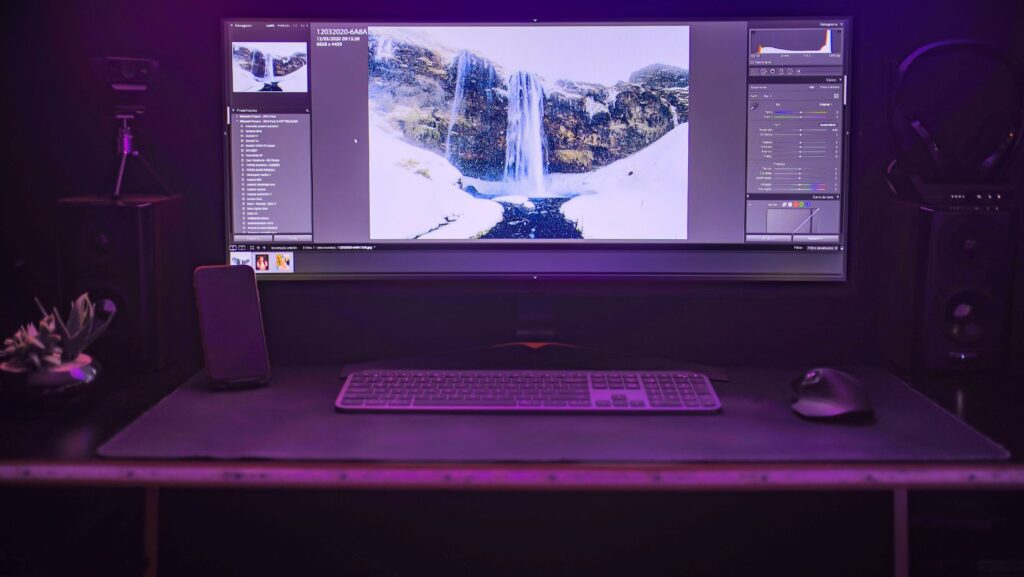Lightroom Classic Hardware Requirements

In the world of digital photography, Adobe Lightroom Classic stands out as a powerful tool for photographers seeking to perfect their images. But to fully harness its capabilities, understanding the hardware requirements is crucial. A well-equipped computer can significantly enhance the editing experience, ensuring smooth performance and efficient workflow.
Photographers often wonder if their current setup can handle the demands of Lightroom Classic, especially when working with high-resolution files and extensive edits. Investing in the right hardware not only boosts performance but also saves time and frustration. From processors to RAM, each component plays a vital role in delivering a seamless editing experience.
Whether you’re a professional photographer or a hobbyist, knowing what hardware is essential for Lightroom Classic can make all the difference. This guide will help you navigate the technical specifications needed to optimize your setup, ensuring you get the most out of this indispensable editing software.
Understanding Lightroom Classic
Adobe Lightroom Classic is a powerful photo editing software favored by photographers for its robust features and comprehensive tools. It caters to both professional and amateur photographers who seek efficient workflow and high-quality output. With its intuitive interface, users can manage large photo libraries, perform precise edits, and apply creative effects seamlessly.

This software excels in handling RAW files, offering advanced capabilities that enhance image quality. Users benefit from non-destructive editing, which preserves original files while enabling iterative changes. Key features like advanced color grading, powerful masking tools, and batch processing augment the creative process.
Integrating smoothly with Adobe Creative Cloud, Lightroom Classic provides users with access to additional resources and updates. Its ability to sync with Lightroom for mobile and the web extends editing capabilities beyond desktop environments. Understanding its full potential helps users leverage this tool effectively, optimizing their workflow and creative output.
Minimum Hardware Requirements
Meeting the minimum hardware requirements ensures Adobe Lightroom Classic operates smoothly. Adequate system resources enhance performance, especially with large photo libraries and intensive editing tasks.
Operating System
Requires a 64-bit Windows 10 or macOS 10.15 or later. These systems support the software’s advanced features and updates effectively.
Processor
A multi-core Intel or AMD processor with 64-bit support and at least 2 GHz clock speed is needed. The software benefits from more cores during batch processing.
RAM
At least 8 GB of RAM is necessary. However, 12 GB or more is recommended for improved multitasking and handling larger projects.
Graphics Card
A GPU with 2 GB VRAM supports GPU acceleration for editing tasks. For optimal performance, a DirectX 12-compatible GPU or macOS Metal support with 4 GB VRAM or more is recommended.
Hard Disk Space
Requires a minimum of 2 GB for installation. Additional space is crucial for storing catalogs, photos, and previews. An SSD significantly enhances file access speed and workflow efficiency.
Recommended Hardware for Optimal Performance
Identifying the right hardware enhances Lightroom Classic’s performance, especially during intensive editing tasks. To optimize the software’s capabilities, consider upgrading specific components.
CPU and Cores
A fast CPU boosts Lightroom Classic’s performance. Adobe recommends a multi-core processor, ideally with six or more cores, like the Intel Core i7 or AMD Ryzen 5 series. More cores streamline tasks like exporting and preview generation.
Memory Considerations
Memory impacts overall efficiency. Adobe suggests at least 16 GB of RAM, but 32 GB or more benefits those working with large files or multitasking. Sufficient RAM maintains smooth performance during complex editing.
SSD vs HDD

An SSD drastically improves file access speed compared to an HDD. Use an SSD for the operating system and Lightroom catalog storage. It reduces load times and enhances workflow efficiency, particularly with high-resolution files.
Understanding and meeting the hardware requirements for Adobe Lightroom Classic is crucial for photographers aiming to streamline their editing process and enhance creative output. By investing in a robust setup with a fast CPU, ample RAM, and a dedicated GPU, users can significantly improve their workflow efficiency and overall experience. Upgrading to an SSD and optimizing software settings further ensures that Lightroom Classic operates at its best. Whether they’re professionals or hobbyists, photographers can unlock the full potential of Lightroom Classic by aligning their hardware and software strategies, ultimately leading to more seamless and productive photo editing sessions.

